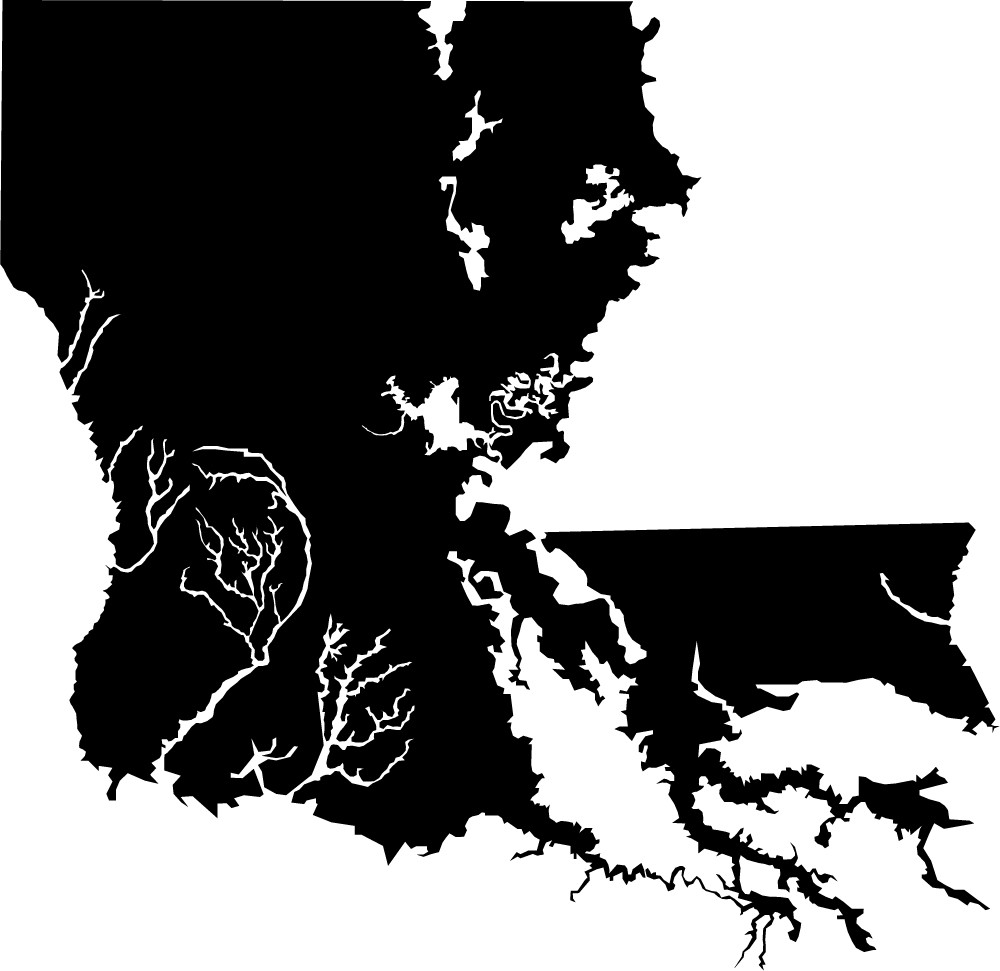Printed maps of the state of Louisiana typically show a “L”- or boot-shaped state, but the state hasn’t actually had that shape for quite some time (h/t PZ):
According to the U.S.G.S., the state lost just under 1,900 square miles of land between 1932 and 2000. This is the rough equivalent of the entire state of Delaware dropping into the Gulf of Mexico, and the disappearing act has no closing date. If nothing is done to stop the hemorrhaging, the state predicts as much as another 1,750 square miles of land — an area larger than Rhode Island — will convert to water by 2064. An area approximately the size of a football field continues to slip away every hour. “We’re sinking faster than any coast on the planet,” explains Bob Marshall, a Pulitzer-winning journalist in New Orleans. Marshall authored the series “Losing Ground,” a recent collaboration between The Lens, a non-profit newsroom, and ProPublica, about the Louisiana coast’s epic demise.
While the kind of state map that might have been useful for navigation or perspective was elusive on the road to Morgan City, the image such maps project — the iconic “boot” shape everyone recognizes as Louisiana — was impossible to escape. The map’s outline was ubiquitous on my drive: on bumper stickers (with the boot standing in for the “L” in “Love”), engulfing T-shirt fronts (my favorite emblazoned with “I drove the Chevy to the levee but the levee was gone”), and glowing on Louisiana-shaped neon beer signs in barroom windows.
But the boot is at best an inaccurate approximation of Louisiana’s true shape and, at worst, an irresponsible lie. It has to be.
Here’s what Louisiana maps usually show:
Here’s what Louisiana apparently actually looks like now:Notice how there’s a bit missing off the bottom? If you look at this area on Google Maps, you see a big expanse of green, some of which is identified as the Atchafalaya National Wildlife Refuge and the Attakapas Island Wildlife Management Area.
At least part of the green area, however, is identified as a body of water, Lake Verret. None of the area seems to be particularly useable as anything we might think of as “land.”

![Ruhrfisch [GFDL (http://www.gnu.org/copyleft/fdl.html), CC-BY-SA-3.0 (http://creativecommons.org/licenses/by-sa/3.0/), CC-BY-SA-2.5 (http://creativecommons.org/licenses/by-sa/2.5) or Public domain], via Wikimedia Commons Ruhrfisch [GFDL (http://www.gnu.org/copyleft/fdl.html), CC-BY-SA-3.0 (http://creativecommons.org/licenses/by-sa/3.0/), CC-BY-SA-2.5 (http://creativecommons.org/licenses/by-sa/2.5) or Public domain], via Wikimedia Commons](http://crypticphilosopher.com/wp-content/uploads/2014/09/Louisiana_Locator_Map.png)

